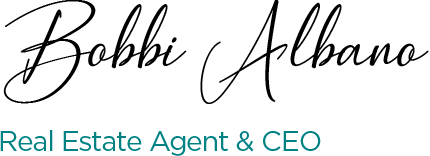In the realm of real estate investment, the fix and flip strategy has gained significant popularity due to its potential for substantial returns. The concept is straightforward: purchase a distressed property, renovate it, and sell it quickly for a profit. While the idea may sound appealing, it’s important to understand the dynamics involved and set realistic expectations. In this blog post, we will delve into the factors that influence potential returns when investing in fix and flip properties.
1. Purchase Price and Renovation Costs:
The foundation of a successful fix and flip investment lies in acquiring the property at a favorable price. Distressed properties, such as foreclosures or properties in need of significant repairs, tend to have lower purchase prices, allowing for a larger profit margin. However, it’s crucial to conduct thorough research and due diligence to ensure the property’s condition aligns with your renovation budget. Accurately estimating the costs of renovations, including materials, labor, permits, and unforeseen expenses, is essential to avoid overspending and eating into potential profits.
2. Renovation Scope and Quality:
The extent of renovations and improvements plays a significant role in determining the profit potential of a fix and flip project. The key is to strike a balance between updating the property to attract buyers and avoiding over-improvement that exceeds the market value of neighboring properties. Understanding the local market and buyer preferences is crucial for making informed decisions regarding the renovation scope. High-quality finishes and modern amenities can increase the desirability and sale price of the property, but it’s important to ensure that the investment aligns with the target market and potential buyer expectations.
3. Market Conditions and Timing:
Real estate markets are subject to fluctuations, and timing plays a vital role in determining the success of a fix and flip investment. Entering the market during a period of high demand and low inventory can increase the likelihood of selling the property quickly and at a higher price. Conversely, an oversaturated market or a downturn can prolong the selling process and potentially impact profitability. Staying updated on local market trends, economic indicators, and supply-demand dynamics allows investors to make informed decisions and time their investments strategically.
4. Holding Costs and Financing:
During the renovation and selling process, investors must consider the holding costs associated with the property. These costs include mortgage payments, property taxes, insurance, utilities, and maintenance expenses. The longer it takes to complete the renovations and sell the property, the higher the holding costs, which can eat into potential profits. Additionally, securing appropriate financing with favorable terms is crucial. High-interest rates or unfavorable loan terms can significantly impact the profitability of the investment. Exploring various financing options and working closely with lenders can help minimize costs and optimize returns.
5. Selling Strategy and Marketability:
The final stage of a fix and flip investment involves selling the property for a profit. Proper marketing and pricing strategies are vital to attract potential buyers and maximize returns. Collaborating with a real estate professional who understands the local market can provide valuable insights into pricing the property competitively and creating effective marketing campaigns. Utilizing online listings, professional staging, high-quality photography, and open houses can enhance the marketability of the property, increasing the chances of a quick sale at a favorable price.
Investing in fix and flip properties can offer substantial returns when approached with a well-researched and strategic mindset. However, it is important to understand that there are very few instances where individuals walking away with a windfall, although it isn’t impossible. When planning your investment, budget costs so that your return is between 10% and 20%. Expecting more than that is simply unrealistic. If you do happen to make a purchase that affords a return higher than 20%, then thank your lucky stars! This is not common. Ultimately, it is essential that you understand the factors that influence profitability, such as purchase price, renovation costs, market conditions, timing, holding costs, financing, and selling strategy, is essential. Diligence in conducting thorough market research, accurate cost estimations, and effective project management is key to maximizing potential profits. While fix and flip investments can be rewarding, it’s important to remain aware of the risks and challenges involved.



